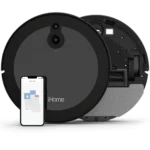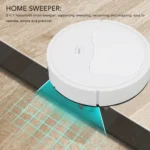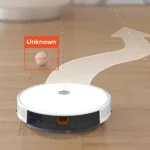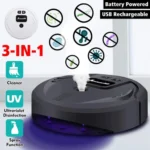We all know the satisfaction of a nice and clean home, free of dust and debris. However, the process of achieving that level of cleanliness can be tedious, time-consuming, and often physically demanding. Enter smart vacuums – an automated solution to keep your floors spick-and-span. But what exactly makes these devices “smart”? The answer lies in the application of machine learning algorithms. Through the use of data analysis and advanced algorithms, smart vacuums can optimize cleaning efficiency and adapt to changing environments. In this article, we’ll dive into the basics of machine learning, explore how smart vacuums use these algorithms to improve cleaning, discuss their benefits and challenges, and explore what the future holds for this technology.
The Basics of Machine Learning
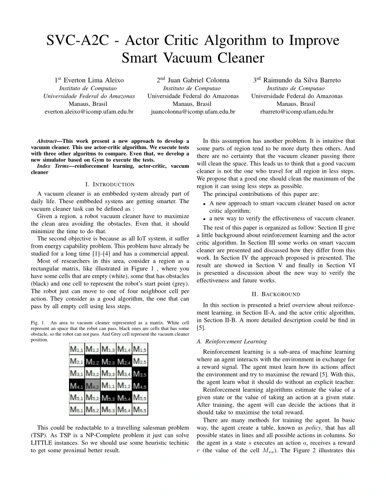
As machines become smarter and more advanced, there’s no doubt that they’ll continue to transform various industries. One technology that’s making a huge impact is machine learning. This powerful tool allows devices to learn from data and improve over time. Machine learning has changed the game for smart vacuums, enabling them to clean more efficiently and effectively than ever before. In this section, we’ll explore the fundamentals of machine learning and how it’s revolutionizing the cleaning industry. If you’re curious about other features of smart vacuums, check out our smart mapping technology guide or our article on sensors and navigation in smart vacuums.
What is Machine Learning?
Machine learning is a type of artificial intelligence that uses algorithms to enable machines to learn from data, without being explicitly programmed. In other words, it is a method of teaching machines to automatically improve their performance on a specific task by learning from experience.
Machine learning is categorized into two main types: supervised learning and unsupervised learning. In supervised learning, machines are provided with labeled data and are trained to make predictions or decisions based on that data. On the other hand, unsupervised learning involves training machines on unlabeled data and then using algorithms to identify patterns and relationships in that data.
There is also another type of machine learning called reinforcement learning, which involves training machines to make decisions based on trial and error. This type of learning algorithm relies on feedback from the environment to improve its decision-making capabilities.
Machine learning is used in various industries, including healthcare, finance, and transportation. Smart vacuums also utilize machine learning algorithms to enable them to clean floors more efficiently and effectively. The next section will discuss how smart vacuums use machine learning algorithms to optimize their cleaning performance.
If you want to learn more about the benefits of using smart vacuums with voice control, check out our previous article.
Types of Machine Learning Algorithms
When it comes to machine learning algorithms, there are three main types: supervised learning, unsupervised learning, and reinforcement learning. Each type performs a specific function in regards to learning from data.
| Types of Machine Learning Algorithms | Description |
| — | — |
| Supervised Learning | This type of algorithm involves feeding labeled data into a machine learning model to guide the learning process. Supervised learning can be used for tasks like image classification, language translation, and prediction. For instance, a smart vacuum can learn from labeled data on object recognition, such as tables, chairs, carpets, and other items. |
| Unsupervised Learning | Unlike supervised learning, unsupervised learning doesn’t require labeled data. It analyzes unstructured data, such as images or sounds, to identify similarities or patterns. Unsupervised learning is used for tasks such as clustering and anomaly detection. A smart vacuum operating in unsupervised learning mode could identify areas of higher traffic where cleaning is required more frequently. |
| Reinforcement Learning | This type of algorithm involves learning through taking actions and receiving feedback, either positive or negative. The algorithm must explore different options before identifying the correct action. Reinforcement learning is used for tasks like gaming and robotics. In the case of a smart vacuum, reinforcement learning could mean learning to avoid obstacles and cleaning in the most efficient way possible. |
With these different types of machine learning algorithms at their disposal, smart vacuums are able to develop their cleaning efficiency over time. They can use both supervised and unsupervised learning to identify patterns in data and adjust their cleaning strategy accordingly. Reinforcement learning allows the vacuum to receive feedback on its cleaning performance, improving its technique with each cleaning cycle.
While machine learning algorithms are not the only factor driving the development of smart vacuums, they play a significant role in optimizing their cleaning efficiency. With continued advancements in machine learning, we can expect even further improvements in the capabilities of these devices.
If you want to learn more about the benefits of smart vacuums with machine learning, check out our article on smart vacuum remote IoT benefits, how smart vacuums use self-emptying bins, or how a smart app can improve vacuum performance.
How Smart Vacuums Use Machine Learning
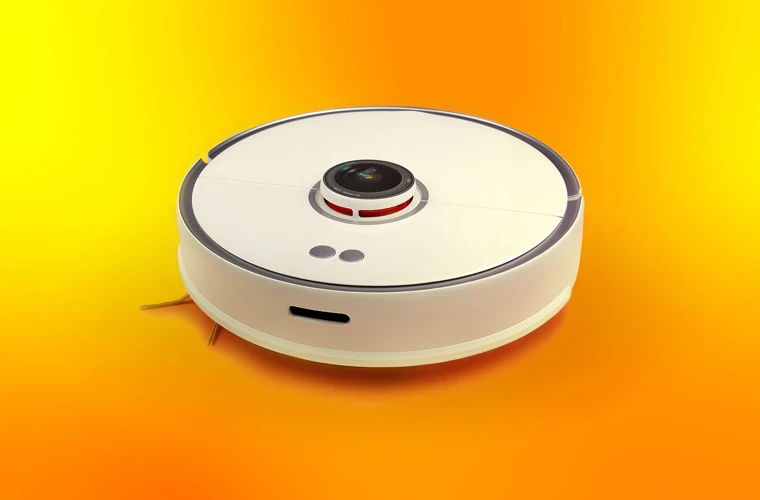
As the world becomes more automated, household appliances have also seen a drastic transformation. One such example is the advent of smart vacuums, which not only make cleaning easier but also incorporate cutting-edge technology. These vacuums use machine learning algorithms to optimize their cleaning efficiency and adapt to changing environments. In this section, we will explore how smart vacuums leverage machine learning techniques to provide a superior cleaning experience.
Acquiring Data
Acquiring data is an essential step in the process of how smart vacuums use machine learning to improve cleaning efficiency. In order for a smart vacuum to be able to clean effectively and efficiently, it needs to gather relevant and accurate data about the environment it is cleaning.
Data Sources
Smart vacuums acquire data from several sources, including built-in sensors, cameras, and third-party systems like GPS or weather APIs. These sources provide data on factors such as room layout, floor surfaces, furniture placement, and even changes in environmental conditions.
To ensure accuracy, smart vacuums rely heavily on sensor technology. Many modern smart vacuums use a combination of sensors to create detailed maps of the cleaning area, which is then used to optimize cleaning patterns.
Data Processing
Once data has been acquired, it needs to be processed so that it can be used by the machine learning algorithms. This typically involves sorting and categorizing the data so that it can be easily analyzed by the smart vacuum.
Smart vacuums also use advanced machine learning techniques such as clustering and regression analysis to identify patterns in the data. This allows the smart vacuum to make informed decisions about how to clean the environment and optimize its cleaning efficiency.
Feedback Loop
One of the key features of smart vacuums is the use of a feedback loop. As the smart vacuum cleans, it gathers data about its effectiveness and uses this to adjust its cleaning patterns in real-time. This allows the vacuum to continuously improve its cleaning efficiency and adapt to changes in its environment.
| Data Acquisition | Data Processing | Feedback Loop |
|---|---|---|
| Acquired from built-in sensors, cameras, and third-party systems | Data is sorted and categorized for analysis and employs advanced machine learning techniques like clustering and regression analysis to identify patterns | Uses data about effectiveness to improve the cleaning pattern in real-time |
The process of acquiring data plays a critical role in how smart vacuums use machine learning algorithms to optimize their cleaning efficiency. With accurate and comprehensive data, a smart vacuum can make informed decisions about how to clean, adapt to changes in its environment, and continuously improve its cleaning efficiency.
Using Machine Learning to Optimize Cleaning
Smart vacuums use machine learning algorithms to optimize cleaning through the following steps:
- Pattern Recognition: The smart vacuum first detects the layout and patterns of the room, such as identifying obstacles and boundaries, and creating a map of the space.
- Data Collection: Once the vacuum has mapped the room, it collects data about the space, such as the location of furniture and the amount of foot traffic in certain areas. This information helps the smart vacuum to identify areas that require more frequent cleaning.
- Algorithmic Decision Making: The smart vacuum uses machine learning algorithms to make decisions about the optimal cleaning path. This includes considering factors such as the location of furniture, frequency of foot traffic, and the presence of obstacles. The algorithm helps the vacuum to optimize its cleaning path and avoid wasting time and energy cleaning areas that do not require attention.
- Adaptive Cleaning: As the smart vacuum continues to collect data over time, it can adapt to changes in the environment. For example, if furniture is moved or new obstacles appear, the vacuum will adjust its cleaning path accordingly. This helps to ensure that the cleaning is always optimized for the current environment.
Using machine learning to optimize cleaning is a game-changer for household cleaning. By using data to make intelligent cleaning decisions, smart vacuums can clean more efficiently and effectively than ever before.
Adapting to Changing Environments
Smart vacuums with machine learning algorithms can adapt to changing environments and optimize their cleaning performance accordingly. They use various sensors like cameras, infrared sensors, and laser sensors to detect changes in the environment. The vacuums can then use this data to adjust their cleaning patterns and optimize their cleaning efficiency.
Here are some ways smart vacuums adapt to changing environments:
- Obstacle Detection: Smart vacuums detect obstacles like furniture, toys, or any other object in their path using sensors. They can then adjust their cleaning path to move around or over the obstacles.
- Mapping and Localization: Smart vacuums can map out the environment they are cleaning and localize their position within that environment. This allows them to create an optimal cleaning path within the environment and avoid cleaning the same area twice.
- Adjusting Suction Power: Different surfaces require different suction powers to be cleaned efficiently. Smart vacuums can detect changes in the surface they are cleaning and adjust their suction power accordingly.
- Identifying High-Traffic Areas: Smart vacuums can identify high-traffic areas like hallways or entrances and focus their cleaning efforts on those areas to ensure they are thoroughly cleaned.
- Real-Time Updates: Smart vacuums can provide real-time updates about their cleaning progress and alert users if they encounter any problems or obstacles. This allows users to monitor their cleaning progress and make adjustments if needed.
Adapting to changing environments not only improves the cleaning efficiency of smart vacuums but also makes them more user-friendly. Users don’t have to worry about moving furniture or other objects out of the way or adjusting the suction power manually. Smart vacuums with machine learning algorithms take care of these adjustments automatically, allowing users to focus on other tasks. Additionally, this feature makes smart vacuums ideal for cleaning large, open spaces that require frequent cleaning.
However, adapting to changing environments can also pose some challenges for smart vacuums. They rely heavily on high-quality data to make accurate adjustments, and any errors in the data can result in suboptimal cleaning performance. Additionally, adapting to changing environments requires significant computational power and can consume a lot of energy, leading to higher costs and maintenance requirements.
Adapting to changing environments is an essential feature of smart vacuums with machine learning algorithms. It allows them to optimize their cleaning performance and provide a more user-friendly experience. As technology continues to improve, it’s likely we’ll see even more advanced features in smart vacuums that will further improve their cleaning efficiency and adaptability.
Benefits of Smart Vacuums with Machine Learning
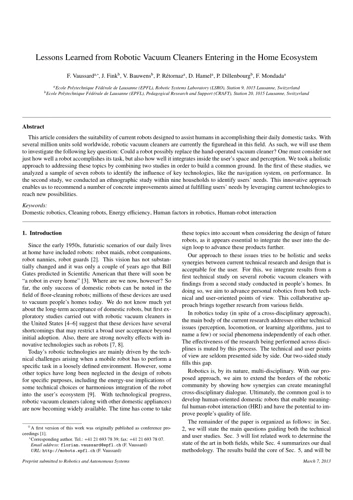
For those who are tired of spending countless hours vacuuming, smart vacuums with machine learning capabilities have become a godsend. These vacuums don’t just simply clean floors; they improve cleaning efficiency, enhance productivity, and are incredibly easy to use. In this section, we will explore some of the advantages and benefits that smart vacuums with machine learning algorithms can offer, making them an excellent investment for any household or business. Let’s dive in!
Increased Cleaning Efficiency
Smart vacuums that use machine learning algorithms offer many benefits, one of which is increased cleaning efficiency. Here are some of the ways a machine learning-powered vacuum can achieve this:
- Targeted Cleaning: Smart vacuums use sensors and cameras to detect areas that need cleaning. Based on the collected data, the vacuum can determine the best cleaning path and adjusted suction power for different surfaces. This allows the vacuum to clean effectively without wasting time and energy on already clean areas.
- Quality Control: Machine learning algorithms enable smart vacuums to analyze the quality of cleaning. This means the vacuum is able to detect any missed spots or areas requiring additional cleaning, and adjust the cleaning process accordingly. The vacuum can learn from previous cleanings to adapt to different surfaces, and optimize cleaning techniques for efficiency.
- Auto-Scheduling: Another way smart vacuums optimize cleaning efficiency is through their ability to schedule cleaning times. The vacuum can learn from previous usage patterns to determine the best time and duration to clean. This ensures that the vacuum is only cleaning when necessary, minimizing energy usage, and maximizing efficiency.
By implementing machine learning algorithms, smart vacuums are able to learn from past experiences, adjust to their environment in real-time, and optimize the cleaning process for efficiency. This not only results in increased cleaning efficiency, but also in time and energy savings.
Improved Productivity and Time Management
One of the greatest benefits of smart vacuums with machine learning is the improved productivity and time management they offer. By using advanced algorithms to optimize their cleaning patterns, these vacuums can clean a space more quickly and efficiently than traditional vacuums.
In fact, according to a recent study by Consumer Reports, smart vacuums are on average 30% faster at cleaning a space than traditional vacuums. This means that users can spend less time cleaning and more time doing the things they love.
But improved productivity and time management don’t just come from faster cleaning. Smart vacuums with machine learning also have the ability to create customized cleaning schedules based on the user’s preferences and the specific characteristics of their space.
For example, a smart vacuum can learn that a certain area of the room tends to collect more dust and dirt than other areas, and adjust its cleaning schedule accordingly. This means that users can rest assured that their space is always clean without having to constantly monitor and adjust their vacuum.
To put it simply, smart vacuums with machine learning allow users to maximize their productivity and free up more time without sacrificing cleanliness. They do the cleaning for you, so you can focus on the things that matter most.
Here’s an html table summarizing the benefits of improved productivity and time management:
| Benefits | Description |
|---|---|
| Faster cleaning | On average, smart vacuums are 30% faster at cleaning a space than traditional vacuums. |
| Customized cleaning schedules | Smart vacuums can learn the user’s preferences and adjust their cleaning schedules accordingly, maximizing efficiency. |
| More free time | Smart vacuums do the cleaning for you, freeing up more time to focus on other tasks or leisure activities. |
User-Friendly Interface and Convenience
One of the most notable benefits of smart vacuums with machine learning is their user-friendly interface and convenience. With the rise of smart home technology, smart vacuums have become more intuitive and easier to use than ever before. Here are some of the ways that these vacuums provide convenience for users:
- Voice Control: Many modern smart vacuums can be controlled using voice commands, eliminating the need to physically interact with the device. This feature is especially useful for individuals with mobility impairments or busy schedules.
- Mobile App Integration: Some smart vacuums come with mobile apps that allow users to control the vacuum from their smartphones. This feature provides added convenience by allowing users to start and stop the vacuum from anywhere in the house.
- Auto-Charging: Smart vacuums can detect when their battery is running low and automatically return to their charging dock to recharge without any intervention necessary from the user.
- Scheduling: Smart vacuums can be scheduled to clean at specific times and days, giving users more control over when they want their floors cleaned.
- Cleaning Reports: Some smart vacuums come with cleaning reports that show users how long the vacuum cleaned, which areas were cleaned, and the amount of dirt and debris that was collected. This feature allows users to track cleaning progress and improve the efficiency of their cleaning routine.
The user-friendly interface and convenience of smart vacuums with machine learning make them an attractive choice for consumers looking to streamline their cleaning routine. With features like voice control, mobile app integration, auto-charging, scheduling, and cleaning reports, these devices offer a level of convenience and ease-of-use that traditional vacuums simply can’t match.
Challenges and Limitations
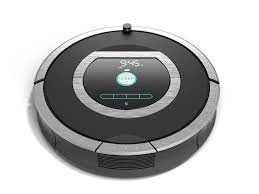
As with any technology, smart vacuums that utilize machine learning algorithms face certain challenges and limitations. While these devices offer a number of benefits to consumers, there are also some potential drawbacks to consider. In order to make an informed decision about whether a smart vacuum is the right choice for your home, it is important to understand these issues and how they may affect you. Let’s explore some of the most significant challenges and limitations that are involved with using smart vacuums with machine learning capabilities.
Reliance on Data Quality
The effectiveness of smart vacuums heavily relies on the quality of the data they acquire and use. This can present a challenge because the accuracy of the cleaning patterns depends on the accuracy of the data collected by the sensors the vacuum uses.
Poor quality data can lead to inaccurate mapping of the home’s layout and potential collisions with obstacles, making vacuuming less productive and possibly damaging furniture. Similarly, errors in the data can result in inefficient cleaning patterns, and contribute to the machine’s decreased effectiveness over time.
To mitigate these challenges, smart vacuums with machine learning capabilities rely on sophisticated algorithms to filter, analyze, and assess the data they receive. This enables them to use only high-quality data to create accurate maps of the home’s layout, identify obstacles, and navigate around them.
One solution to ensuring high-quality data is to implement data cleaning and validation protocols to filter out incorrect or irrelevant information. By doing this, smart vacuums are able to continuously improve the accuracy of their cleaning patterns, making them more effective over time.
Despite these methods, it’s important to note that the reliability of smart vacuums with machine learning algorithms is heavily dependent on the quality of the data they acquire. It’s important for manufacturers to ensure that they use sensors and algorithms that produce high-quality data, and establish protocols for inspecting, validating and cleaning the data before it is used by the vacuum.
In conclusion, for smart vacuums with machine learning algorithms to perform efficiently, data quality is a critical factor. Without high-quality data, the vacuum may collide with obstacles, inefficiently clean areas, and lead to sub-par results that can ultimately damage furniture or reduce its effectiveness over time. Manufacturers should implement strict data cleaning and validation protocols to ensure that only high-quality data is used.
Costs and Maintenance
Smart vacuums with machine learning algorithms are undoubtedly efficient and helpful for maintaining cleanliness in households and offices. However, one major consideration when purchasing a smart vacuum is the costs and maintenance associated with it.
The costs of smart vacuums are usually higher than traditional vacuums. Smart vacuums with machine learning algorithms are equipped with high-tech software and hardware, which means more expensive materials and labor costs. The cost of software updates and technical support cannot be overlooked.
The maintenance of smart vacuums is also more complex than their traditional counterparts. The sensors, cameras, and other components of a smart vacuum require periodic cleaning and maintenance to ensure they function correctly. Additionally, the battery life of smart vacuums is often shorter, leading to more frequent battery replacements.
To mitigate the costs and maintenance associated with smart vacuums, it is essential to research and compare different models and brands before making a purchase. Some manufacturers offer regular maintenance and software updates as part of their warranty, which can help reduce long-term costs. It may also be helpful to invest in additional accessories, such as replacement batteries or filters, to ensure the vacuum remains in optimal condition for as long as possible.
While the costs and maintenance of smart vacuums may be higher compared to traditional vacuums, the benefits of a cleaner and more efficient home or office may outweigh these drawbacks for many individuals.
Future of Smart Vacuums with Machine Learning
As technology continues to advance, the future of smart vacuums with machine learning looks exciting. Current smart vacuums with machine learning capabilities are already quite advanced, but they are far from perfect. In the future, we can expect to see even more sophisticated technology being implemented to improve the efficiency and performance of these smart vacuums.
More Advanced Sensors: With advances in sensor technology, smart vacuums will be able to detect more types of debris and dirt that they might have missed before. This will allow the vacuum to map out the space in greater detail and improve the cleaning process.
Improved Navigation: Future smart vacuums will have even better navigation capabilities, thanks to machine learning. They will be able to create more accurate maps of their surroundings and clean the space more efficiently. This will lead to a more thorough cleaning job and less time required to clean.
Better Integration into Smart Homes: As smart homes become more common, smart vacuums will need to have better integration with smart home devices. We can expect to see smart vacuums that are compatible with more devices and can be easily integrated into existing smart home ecosystems.
Increased Customization: In the future, smart vacuums will be able to learn more about their users and their preferences. This means that they will be able to provide more customized cleaning experiences. For example, a smart vacuum might recognize that a user has certain areas of their home that are messier than others and focus cleaning efforts in those areas.
The future of smart vacuums with machine learning is bright. These devices will continue to improve in efficiency, performance, and customization. As technology continues to advance, we can expect to see even more impressive capabilities introduced to the market.
Conclusion
In conclusion, it’s clear that smart vacuums equipped with machine learning algorithms are a game-changer for cleaning technologies. The advances in computing power and data processing capabilities have enabled machines to continually learn and adapt to their surroundings, making them more efficient and effective at cleaning while saving time for their users.
Overall, the use of machine learning has allowed smart vacuums to acquire data and optimize their cleaning processes by analyzing and understanding patterns in their respective environments. This has led to increased cleaning efficiency and improved productivity for users.
Additionally, the user-friendly interfaces of smart vacuums have made them a popular choice for those who prioritize convenience. With just a few taps on their smartphones or other devices, users can control their smart vacuums and schedule cleanings according to their needs.
However, it’s important to note that smart vacuums still have their limitations, such as their reliance on quality data and the costs associated with maintenance. It’s crucial for manufacturers to continually invest in improving the accuracy and reliability of their data input, as well as making sure their products are sustainable and affordable for consumers.
The future of smart vacuums looks bright as advancements in machine learning, robotics, and sensor technologies continue to emerge. It’s likely that we will see more sophisticated and highly-efficient smart vacuums, with new features and capabilities that we can only imagine today.
In summary, smart vacuums using machine learning algorithms have revolutionized the way we clean our homes and are poised to become even more essential in the future.
Frequently Asked Questions
How do smart vacuums use machine learning algorithms?
Smart vacuums use machine learning algorithms to optimize their cleaning processes, adapt to changing environments, and improve their overall cleaning efficiency.
What are the benefits of using a smart vacuum with machine learning?
Smart vacuums with machine learning offer increased cleaning efficiency, improved productivity and time management, and user-friendly interface and convenience.
What is machine learning?
Machine learning is a process by which machines are trained to learn and make decisions based on data, without being explicitly programmed.
What are the types of machine learning algorithms?
The types of machine learning algorithms are supervised learning, unsupervised learning, and reinforcement learning.
How do smart vacuums acquire data?
Smart vacuums acquire data through sensors, cameras, and mapping technologies, which provide information about their environment and cleaning patterns.
How does machine learning optimize cleaning with smart vacuums?
Machine learning optimizes cleaning by analyzing data from sensors and cameras, and adjusting cleaning patterns and schedules accordingly.
Can smart vacuums adapt to changing environments?
Yes, smart vacuums with machine learning can adapt to changing environments by analyzing data and adjusting cleaning patterns accordingly.
What are the challenges of using smart vacuums with machine learning?
Challenges include reliance on data quality, and costs and maintenance associated with these advanced technologies.
What is the future of smart vacuums with machine learning?
The future of smart vacuums with machine learning is bright, with continued advancements in artificial intelligence and the potential for the integration of other smart technologies.
Are smart vacuums with machine learning user-friendly?
Yes, smart vacuums with machine learning are designed to be user-friendly, with convenient interfaces and the ability to schedule cleaning times and access cleaning data.

